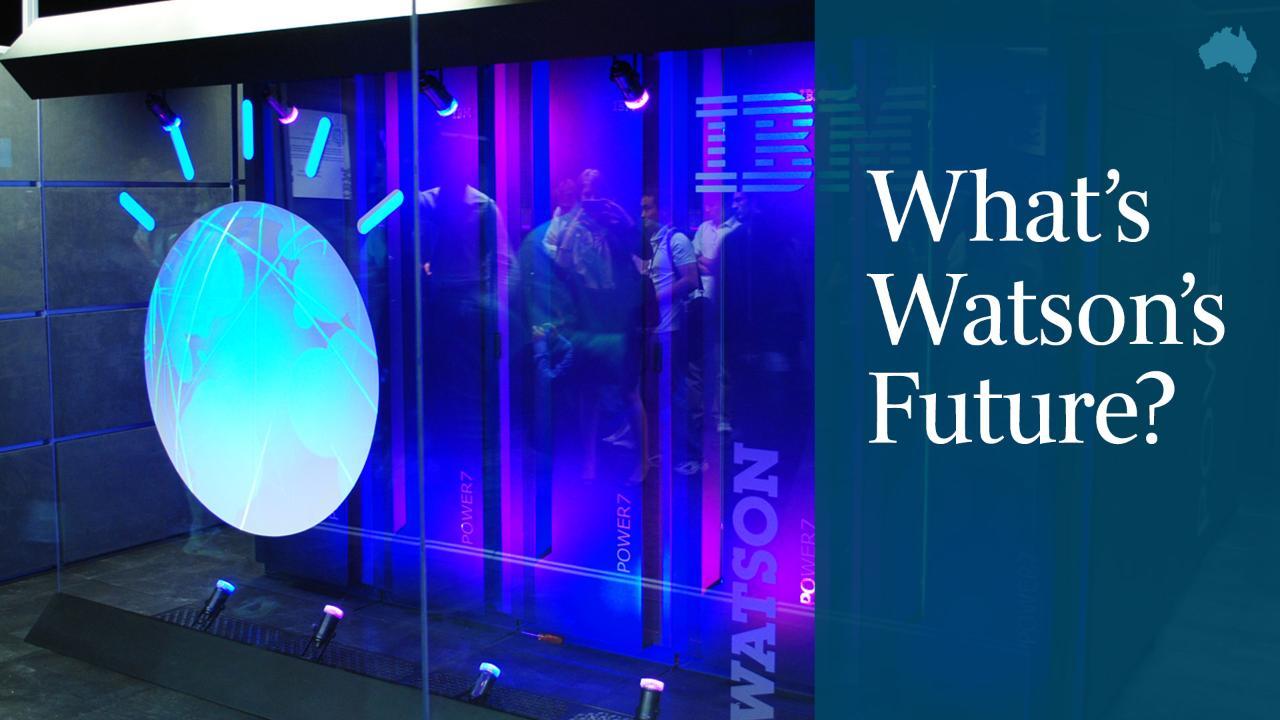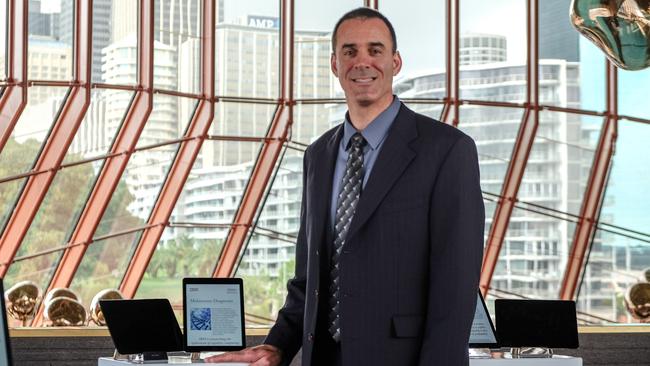It’s all elementary for IBM supercomputer Watson
IBM’s supercomputer is unlikely to make us redundant anytime soon.

IBM’s supercomputer Watson became famous in 2011 after it beat humans in the US quiz show Jeopardy! but we can rest assured it’s unlikely to make us redundant anytime soon. If anything, we are increasingly putting Watson’s immense powers to greater use.
Peter Haggar, an IBM master inventor and technical leader of the Watson runtime platform, says it’s unlikely Watson would become more intelligent than humans in the near-term.
“I know that with Watson, some people have raised that concern but I don’t know if that’s likely in our lifetime and the way we’re positioning it is as a partner, as an enhancer,” Dr Haggar told The Australian. “Is Watson going to be making decisions about my health? The answer is ‘no’.”
Dr Haggar’s involvement began after Watson’s triumph at Jeopardy!. With the super computer pushing the boundaries of natural language processing and computer science at the time, Dr Haggar’s main job was to commercialise the technology, taking it out of the realm of pure research and into IBM’s product groups.
“We had a lot of customers who said: ‘We’d like one of those’, so we went on a mission on how do we commercialise it? “So we took Watson out of research, moved it into our product groups and that’s when I jumped in.”
What sets Watson apart is its ability to digest large amounts of structured and unstructured data, images, video and make sense of it.
“Take healthcare as one example, the amount of data that is produced for a doctor to review, they can’t do it, there’s so much information that’s’ produced that it would be full-time job for a doctor actually to ingest that information,” Dr Haggar said.
So could Watson be fed thousands of tables of stock market data and make share recommendations? Or be fed the performance data of footballers and pick a winning side? Or analyse racing data and come up with a Melbourne Cup winner?
According to Dr Haggar, selling shares poses more of a predictive analytics problem but Watson could take in much of the available unstructured data and aid in that. “I don’t know if there’s anyone doing that today but certainly that’s a possibility. It’s certainly possible to have it aid decision-making with some precision.”
As things stand today, 19 cognitive services that are part of Watson’s formidable talents, including its natural language processing capability, are now available through IBM’s Bluemix cloud platform.
Joanna Batstone, chief technology officer, IBM ANZ, said Deakin University used Watson for its cognitive student advisers and natural gas provider Woodside used cognitive computing to leverage the expertise buried in 30 years of records from field engineering results.

Dr Batstone said Watson was also being primed to sift through a mountain of medical images to learn to identify melanoma.
“What we’re doing with Watson is building a library of images working with clinicians so that Watson can interpret, analyse and annotate medical images; we’re focused on melanoma here in the Australian research labs,” she said.
She said IBM was also examining breast and cardiac MRI images in partnership with other labs.
She said IBM’s Melbourne research lab, which opened in 2011, was focusing on life sciences and healthcare research, working with state and local governments on disaster management and evacuation planning, and on natural resources in partnership with the oil, gas and mining industries.
About 120 research and development experts work there.
So do voice engines such as Apple Siri and Microsoft Cortana use IBM’s natural language capability? IBM didn’t answer directly, but Dr Batstone said IBM had released speech-to-text and text-to-speech technology on to the open source environment and had a focus on driving standards.
“Companies that are investing in speech translation are often leveraging some of the key inventions that we released in our patent portfolio to the open source ecosystem,” she said.
She said IBM was partnering with the Weather Channel to bring weather data and forecasting into the ecosystem of partners and APIs as Watson’s assets within Bluemix.
Other partnerships included Twitter and Apple.
Bala Rajaraman, IBM Fellow and CTO of IBM Cloud Platform Services, said several thousand organisations including major banks, insurance companies, retailers and start-ups were using the Bluemix platform as a service.
Users could build applications by putting together services such as Watson in five minutes.
With more than 370 partners across 17 countries and 36 industries using Watson’s cognitive services in the cloud, IBM opened its first Australian Watson Client Experience Centre in Melbourne last week, one of only six global centres outside of the Watson Group’s headquarters in New York City.


